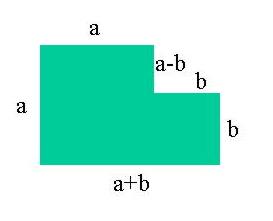 Author
Author |
Topic: Pythagorean dissection (Read 612 times) |
|
JocK
Uberpuzzler
    

Gender: 
Posts: 877
|
 |
Pythagorean dissection
« on: Feb 6th, 2005, 11:27am » |
 Quote Quote  Modify Modify
|
You have to teach a class Pythagoras' theorem. You decide to make a puzzle to help them understand this theorem.
Someone told you that one can dissect a square of area a2 into four equal pieces such that when a square of area b2 is added as a fifth piece, the five pieces together can be rearranged into a square of area a2+b2.
For arbitrary a > b, what is the shape of the four identical pieces that you have to construct?
|
| « Last Edit: Feb 6th, 2005, 11:59am by JocK » |
 IP Logged IP Logged |
solving abstract problems is like sex: it may occasionally have some practical use, but that is not why we do it.
xy - y = x5 - y4 - y3 = 20; x>0, y>0.
|
|
|
Barukh
Uberpuzzler
    

Gender: 
Posts: 2276
|
Note that this can be done as a pivot puzzle.
|
|
 IP Logged IP Logged |
|
|
|
JocK
Uberpuzzler
    

Gender: 
Posts: 877
|
Well done Barukh.
Perhaps an even better educational tool originates when dissecting below L-shape into 4 equal triangles and a square such that the five pieces can be put together in the form of a square.
What is the shape of the triangles, and what is the size of the square?
|
|
 IP Logged IP Logged |

solving abstract problems is like sex: it may occasionally have some practical use, but that is not why we do it.
xy - y = x5 - y4 - y3 = 20; x>0, y>0.
|
|
|
|
 WRITE MATH!
WRITE MATH!
 Home
Home  Help
Help  Search
Search  Members
Members  Login
Login  Register
Register WRITE MATH!
WRITE MATH!
 Home
Home  Help
Help  Search
Search  Members
Members  Login
Login  Register
Register